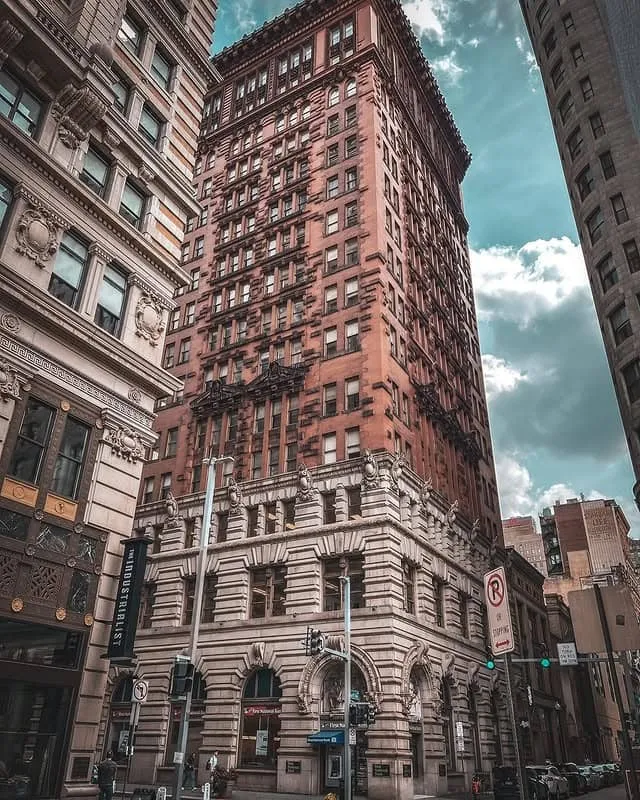The Fourth Avenue Historic District is 'the historic core of Pittsburgh's downtown financial district'.The architectural significance of the district is demonstrated by the architectural richness of the predominantly Classical Revival buildings that were built in the boundary increase area within the Period of Significance.
The first bank to open along Fourth Avenue was the Bank of Pittsburgh, which was built there in 1832, but it was the construction of the monumental Dollar Savings Bank at 340 Fourth Avenue (completed in 1871 and enlarged in 1906) that marked the beginning of Fourth Avenue's heyday in finance and banking. After the panic of 1873, money flowed into the city from regional oil producers and steel manufacturers.From 1890 to 1905 more than 49 new banks were established in Pittsburgh, with the majority of banking houses located within the traditional limits of Pittsburgh's influential Wall Street—the 200 and 300 blocks of Fourth Avenue between Market and Smithfield Streets.
It is significant to note that (with the two minor exceptions at 433 and 435-437 Wood Street) there has been no new construction within the boundary increase area after 1934. The main changes of the intervening years are the alterations that have been made to the first floor storefronts in the area.
